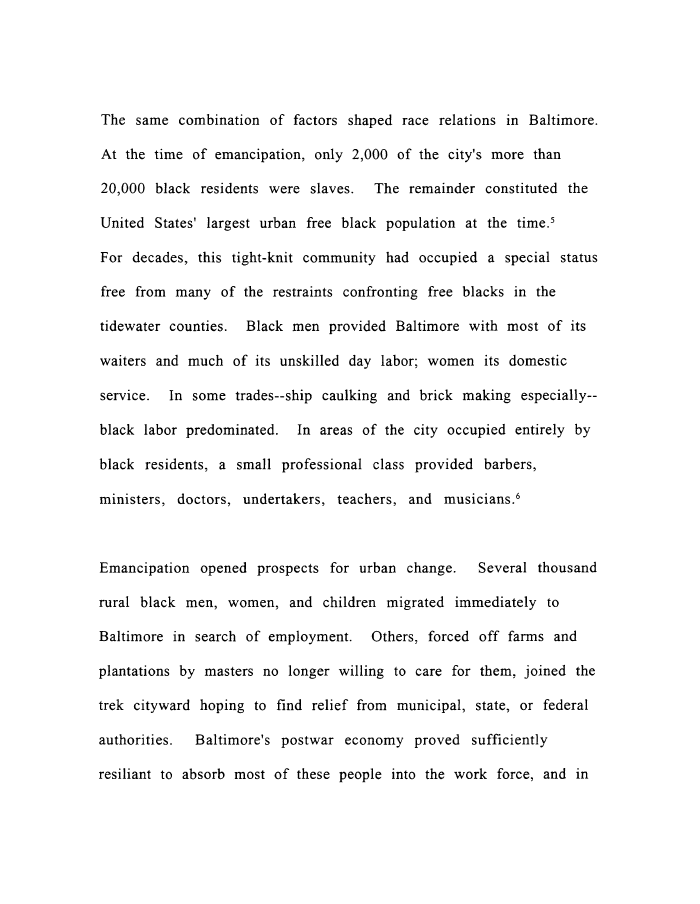 |
||||
|
TASK FORCE TO STUDY THE HISTORY AND LEGACY OF SLAVERY IN MARYLAND (Final Report) 1999/12/31 MdHR 991422 MdHR 991422, Image No: 295 Print image (40K) |
 |
||||
|
TASK FORCE TO STUDY THE HISTORY AND LEGACY OF SLAVERY IN MARYLAND (Final Report) 1999/12/31 MdHR 991422 MdHR 991422, Image No: 295 Print image (40K) |
| The same combination of factors shaped race relations in Baltimore. At the time of emancipation, only 2,000 of the city's more than 20,000 black residents were slaves. The remainder constituted the United States' largest urban free black population at the time.5 For decades, this tight-knit community had occupied a special status free from many of the restraints confronting free blacks in the tidewater counties. Black men provided Baltimore with most of its waiters and much of its unskilled day labor; women its domestic service. In some trades—ship caulking and brick making especially-black labor predominated. In areas of the city occupied entirely by black residents, a small professional class provided barbers, ministers, doctors, undertakers, teachers, and musicians.6 Emancipation opened prospects for urban change. Several thousand rural black men, women, and children migrated immediately to Baltimore in search of employment. Others, forced off farms and plantations by masters no longer willing to care for them, joined the trek cityward hoping to find relief from municipal, state, or federal authorities. Baltimore's postwar economy proved sufficiently resiliant to absorb most of these people into the work force, and in |